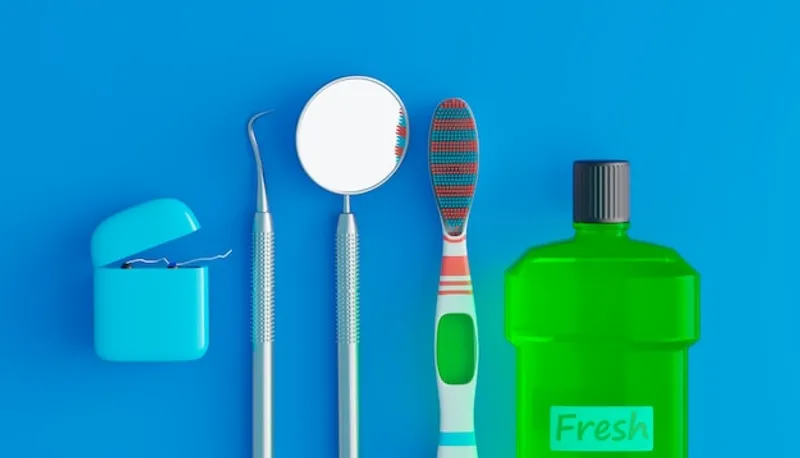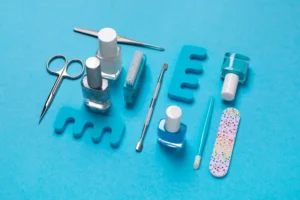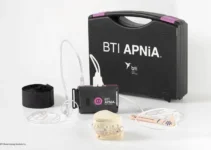Exploring the various teeth whitening kits available in the market can be overwhelming with numerous brands and types claiming to offer the best results. It’s crucial to understand the key components such as the type of bleaching agents used, the concentration levels, and the application methods, which can significantly affect the outcome and safety of the whitening process. Be sure to consider factors such as your dental health, sensitivity level, and desired whitening goals before making a purchase to ensure the best and safest teeth whitening experience.
Understanding Teeth Whitening Kits
What Are Teeth Whitening Kits?
Teeth whitening kits are dental products designed for home use to help individuals achieve a brighter smile. These kits typically contain a bleaching agent, most commonly hydrogen peroxide or carbamide peroxide, which helps to remove surface stains and discoloration on teeth.  The convenience and affordability of these kits have made them a popular choice for many people looking to improve their dental aesthetics.
The convenience and affordability of these kits have made them a popular choice for many people looking to improve their dental aesthetics.
According to studies, teeth whitening kits can be effective in enhancing the appearance of teeth. However, the results can vary significantly based on factors such as the type of stains, the concentration of the bleaching agent, and the duration of use. It’s important to use these kits as directed to achieve optimal results and to minimize potential side effects.
Types of Teeth Whitening Kits
There are several types of teeth whitening kits available in the market, each catering to different needs and preferences. Here are some common types:
- Whitening Strips: Thin, flexible strips coated with a bleaching agent that are applied directly to the teeth.
- Whitening Gels: Peroxide-based gels applied with a small brush directly onto the teeth’s surface.
- Whitening Trays: Custom or semi-custom trays filled with a bleaching gel that fit over the teeth.
- Whitening Pens: Pens containing bleaching gel, often used for touch-ups and convenience.
Each type has its own advantages and disadvantages. For instance, whitening strips are easy to use but may not cover all tooth surfaces evenly. Whitening trays, on the other hand, can provide more uniform coverage but require more preparation and can be uncomfortable for some users.
How Do Teeth Whitening Kits Work?
The primary mechanism behind teeth whitening kits involves the use of bleaching agents like hydrogen peroxide or carbamide peroxide. These agents penetrate the enamel to reach the discolored molecules within the teeth. The oxidation reaction breaks apart these molecules, effectively reducing the appearance of stains and brightening the teeth.
The concentration of the bleaching agent plays a crucial role in determining the effectiveness of the whitening process. Higher concentrations can provide faster results but also carry a greater risk of tooth sensitivity and gum irritation. It’s recommended to start with lower concentrations and gradually move up if needed. Application time is another critical factor. Most kits require application times ranging from 15 minutes to an hour, with varying durations over several days or weeks. It’s important to follow the manufacturer’s instructions closely to reduce the risk of adverse effects and to achieve the best possible results.
Exploring the science behind teeth whitening kits not only helps in choosing the right product but also ensures safe and effective usage. For further insights into dental care and advanced cosmetic procedures, be sure to read our other articles.
Factors to Consider When Buying a Teeth Whitening Kit
Teeth whitening kits have become increasingly popular as people strive for a brighter, more confident smile. However, with so many options available, it’s crucial to understand the various factors that can affect the efficacy and safety of these products. By considering these factors, you can make a more informed decision and achieve the best results for your dental health.
One of the most important aspects to consider is the *safety* and *ingredients* of the whitening kit. Additionally, the *ease of use* and *convenience* of the product play a significant role in its effectiveness. Let’s explore these factors in more detail to ensure you choose the right whitening kit for your needs.
Safety and Ingredients
When choosing a teeth whitening kit, one of the primary concerns should be the *safety* of the product. Many kits contain *hydrogen peroxide* or *carbamide peroxide*, which are effective bleaching agents. However, these substances can cause *sensitivity* and *irritation* if used incorrectly. It’s essential to follow the manufacturer’s instructions carefully to minimize the risk of adverse effects.
Another key factor is the *ingredient list*. Look for kits that have been endorsed by dental associations, as these are more likely to contain *safe and effective* ingredients. Avoid kits with *unregulated substances* or *high concentrations* of bleaching agents that could harm your enamel. Some kits also include *desensitizing agents* like potassium nitrate to mitigate sensitivity.
It’s also beneficial to consider the *pH level* of the whitening product. A neutral or slightly alkaline pH is preferable as it reduces the likelihood of enamel erosion. *Natural ingredients* like *baking soda* and *charcoal* are often marketed as safer alternatives but may not be as effective. Therefore, a balance between *efficacy* and *safety* should be sought.
Ease of Use and Convenience
The *ease of use* of a teeth whitening kit can significantly impact your consistency and overall results. Kits that require *complex procedures* or *extended periods* of application may not be practical for everyone. Look for products that fit seamlessly into your daily routine, ensuring that you can maintain regular use without much hassle.
Some kits come with *pre-filled trays*, *strips*, or *brush-on applicators*, making them more convenient. These options can be especially useful for individuals with *busy lifestyles* who cannot dedicate a lot of time to teeth whitening. Additionally, consider if the product offers *portability* for use during travel or at work.
Another aspect to consider is the *duration* of the treatment. While some products promise *rapid results*, others may require several weeks to show noticeable changes. Assess your *patience level* and *commitment* to the process before making a purchase. It’s also helpful to look for kits with a *money-back guarantee*, which allows you to test the product risk-free.
In summary, when buying a teeth whitening kit, assessing factors such as safety, ingredients, ease of use, and convenience can help you make an informed decision. By opting for a product that balances these elements, you can achieve a whiter smile with minimal risk and effort. For more insights into dental care, be sure to check out our other articles that delve deeper into various dental treatments and tips.
Advantages and Disadvantages of Teeth Whitening Kits
Teeth whitening kits have become increasingly popular as a convenient and cost-effective way to achieve a brighter smile. However, like any dental treatment, they come with both benefits and drawbacks. This article aims to provide a balanced view of the advantages and disadvantages of using teeth whitening kits.
Understanding the pros and cons will help you make an informed decision about whether teeth whitening kits are the right choice for you. Below, we explore the major pros and cons, as well as the cost-effectiveness of these products.
Pros of Using Teeth Whitening Kits
One of the most compelling advantages of teeth whitening kits is their convenience. Unlike professional treatments that require appointments and multiple visits to the dentist, you can use these kits in the comfort of your own home. This makes it easier to fit whitening treatments into your busy schedule.
Another significant benefit is the cost savings. Professional teeth whitening can be quite expensive, often costing several hundred dollars per session. Teeth whitening kits, on the other hand, are generally more affordable and offer multiple treatments per kit. This makes it a viable option for those looking to brighten their smile without breaking the bank. Additionally, many over-the-counter teeth whitening kits have shown to be effective. Studies have demonstrated that ingredients commonly found in these kits, such as hydrogen peroxide and carbamide peroxide, can remove stains and lead to a whiter smile. Therefore, for many users, these kits meet or even exceed their whitening expectations.
Cons of Using Teeth Whitening Kits
However, teeth whitening kits are not without their downsides. One major disadvantage is the potential for sensitivity. Many users report increased tooth sensitivity and gum irritation after using whitening kits. This can be particularly problematic for those who already have sensitive teeth or existing dental issues.
Another drawback is that the results are not permanent. Over time, your teeth can become discolored again due to factors such as food, drink, and lifestyle choices. This means that you may need to use the whitening kits repeatedly, which can increase the risk of enamel damage and other dental problems.
Moreover, over-the-counter kits are one-size-fits-all and may not provide the same level of customization as professional treatments. For example, the trays included in these kits may not fit perfectly, which can lead to uneven whitening and less effective results.
Cost-Effectiveness
When it comes to cost-effectiveness, teeth whitening kits can be a smarter choice compared to professional treatments. The initial expense of purchasing a DIY kit is often significantly lower than the cost of a single professional whitening session.
However, it’s essential to consider the need for multiple applications over time. While a professional treatment might offer more immediate results, teeth whitening kits often require consistent usage to maintain the desired level of whiteness. This can add up in terms of both cost and time invested.
Additionally, because whitening kits generally use lower concentrations of active ingredients, the risk of side effects like sensitivity and gum irritation may be less, contributing to their overall cost-effectiveness. It’s also worth noting that some kits include additional features like remineralizing gels, which can help mitigate some of the potential downsides.
Ultimately, whether a teeth whitening kit is cost-effective will depend on your specific needs, budget, and how well you follow the instructions provided. Thoroughly reviewing your options and perhaps even consulting your dentist can make your decision easier.
If you found this article useful, you may want to read our other articles on dental health and cosmetic dentistry to explore more ways to achieve and maintain a beautiful smile.
Aftercare and Maintenance Tips
After undergoing a dental implant procedure, it is crucial to adhere to proper aftercare and maintenance tips to ensure optimal healing and longevity of the implants. Post-operative care significantly impacts the success rate of dental implants and helps in maintaining oral health.
Adhering to a strict aftercare regimen not only helps in faster recovery but also minimizes the risks of complications. Regular follow-up visits to the dentist are essential for monitoring the progress and addressing any concerns promptly.
Maintaining Your Results
To maintain the results of your dental implants, it is essential to follow a rigorous oral hygiene routine. This includes brushing at least twice a day and using interdental brushes or floss to clean between the implants and natural teeth. Using a non-abrasive toothpaste can prevent damage to the implant’s surface.
Avoiding hard and sticky foods can also help maintain the integrity of the implants. Foods like nuts, hard candies, and caramel can exert undue pressure on the implants, potentially causing damage or displacement. Incorporating a balanced diet rich in vitamins and minerals also promotes bone and gum health.
Regular dental check-ups are imperative. They allow the dentist to assess the condition of the implants and the surrounding tissues, ensuring that any issues are addressed swiftly. Professional cleanings can remove plaque and tartar build-up that regular brushing might miss.
Dealing with Sensitivity and Side Effects
Experiencing some degree of sensitivity and side effects post-implant surgery is normal. Common side effects include swelling, bruising, and minor bleeding. Managing these symptoms effectively aids in a smoother recovery process.
Over-the-counter pain relievers and anti-inflammatory medications can be used to alleviate discomfort and swelling. Applying an ice pack on the cheek near the surgical site can also help reduce swelling and bruising within the first 24-48 hours post-surgery.
If sensitivity persists, using a desensitizing toothpaste can provide relief. It is also advisable to avoid extremely hot or cold foods and beverages, as they can exacerbate sensitivity. Rinsing with a saline solution can help keep the surgical site clean and promote healing.
In rare cases, more severe side effects like infection or implant mobility may occur. If any unusual symptoms arise, it is crucial to contact the dentist immediately. Early intervention can prevent further complications and ensure the longevity of the dental implants.
For more detailed guidance on dental implants and oral care, explore our other informative articles that dive deeper into these topics.
Choosing the Right Teeth Whitening Kit
When shopping for a teeth whitening kit, it’s important to consider several factors to ensure you choose a product that is effective and safe. Here’s a commonly asked question to help guide your purchase.
What should I look for in a teeth whitening kit?
Look for a kit that includes a proven whitening agent such as hydrogen peroxide or carbamide peroxide. The concentration of the whitening agent should be strong enough to be effective, but not so high that it causes sensitivity or damage to your enamel. Additionally, check for kits that come with a customizable mouth tray or LED light to enhance the whitening process. Always choose products from reputable brands and check for ADA (American Dental Association) acceptance if available.

My name is Salman Kapa, a 73-year-old expert in bone regeneration and dental implantology. With decades of experience in the field, I am dedicated to advancing our understanding of oral health and hygiene. Through my research and writing, I aim to contribute to the development of innovative solutions in dental care.




